The Article
TD 240-2 From Thorens: Automatic Play
6th February 2018
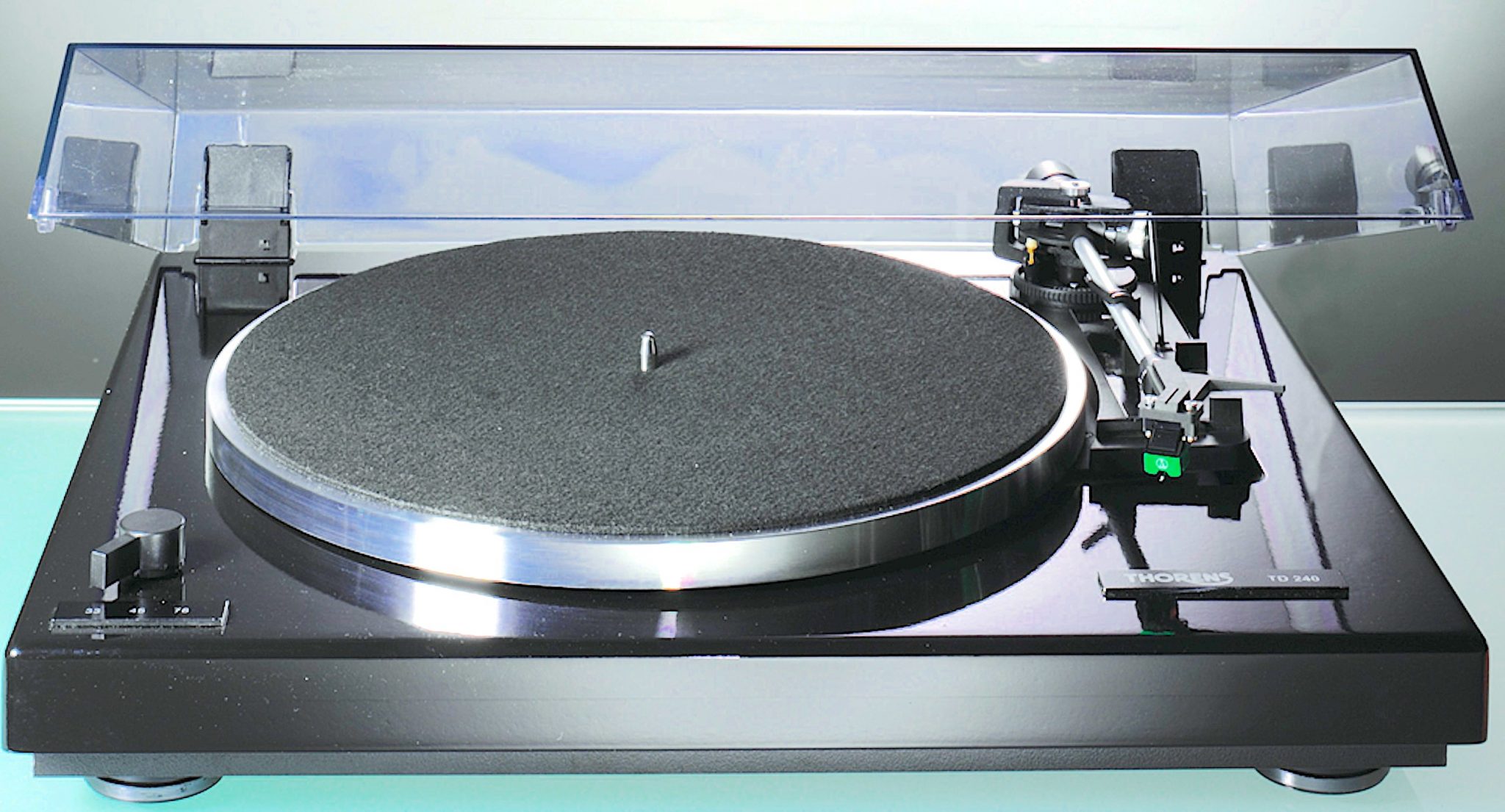
If the only way you want to play records is via an automatic turntable, where do you go? Paul Rigby wonders if Thorens’ TD 240-2 is the answer
There was a moment there. A moment when I opened the box of this belt-driven turntable. Saw that it toted an automatic record playing action, realised what that meant in terms of audiophile sound and how such a mechanism would surely compromise sonics and then saw the price of £699.
Then I did a double take.
Then I looked again for a third time.
Was that true? A price of £699 (you can find it for around £629 on Amazon, but still) for an automatic turntable? Actually, though, for an automatic, it appeared well made and solid in terms of build. Most automatics that I’d seen were plastic Chinese models. We’ll talk more about this below.
But there was something else. Something familiar about the TD 240-2.
So I had to step back and look once more. And then I had it. Dual. This turntable looked like a Dual. Many of the parts looked way too familiar. In fact, most of the design of the Thorens, the plinth, the platter and tonearm look very similar to the current Dual CS 455-1 (£370 from Amazon) with an upper plinth speed selector that could be unique to Thorens or could be a modified 505-4 (£787 from Amazon) part. At least, it looks very similar. I have yet to perform a direct comparison between the 455-1 and the 240-2 to list specific differences between the two but I do know that the Thorens is around 1kg heavier than the 455-1 while retaining a suspended sub-chassis.
It appears, then, that Thorens and Dual have done a bit of chatting down the local bierkeller, sketched a proposed hybrid turntable design on the back of a beermat, toted up the parts required and shook hands on the deal. The TD 240-2 is the result.
So let’s look at this Thorens product more closely then. This 3-speed turntable (yes, 78rpm is catered for too) arrives with, what Thorens terms as, a TP 19-1 tonearm that presents a very thin arm tube, with a badged Audio Technica AT95E cartridge hanging off the end. The tonearm structure includes a damped arm lift, anti-skate wheel and, on the tonearm base, start/stop selector and a selector for the automatic function for either 12” LPs or 7” singles which is printed here – rather irritatingly – as 17cm and 30cm.
The platter is thin and made from aluminium but fitted underneath the entire rim is a thick piece of rubber. There is some ringing if the platter is struck but the rubber hosing keeps this effect to a minimum. The platter fits on the spindle and is fixed by two pins that pinch it and secure it. It’s a bit Heath Robinson but it works.
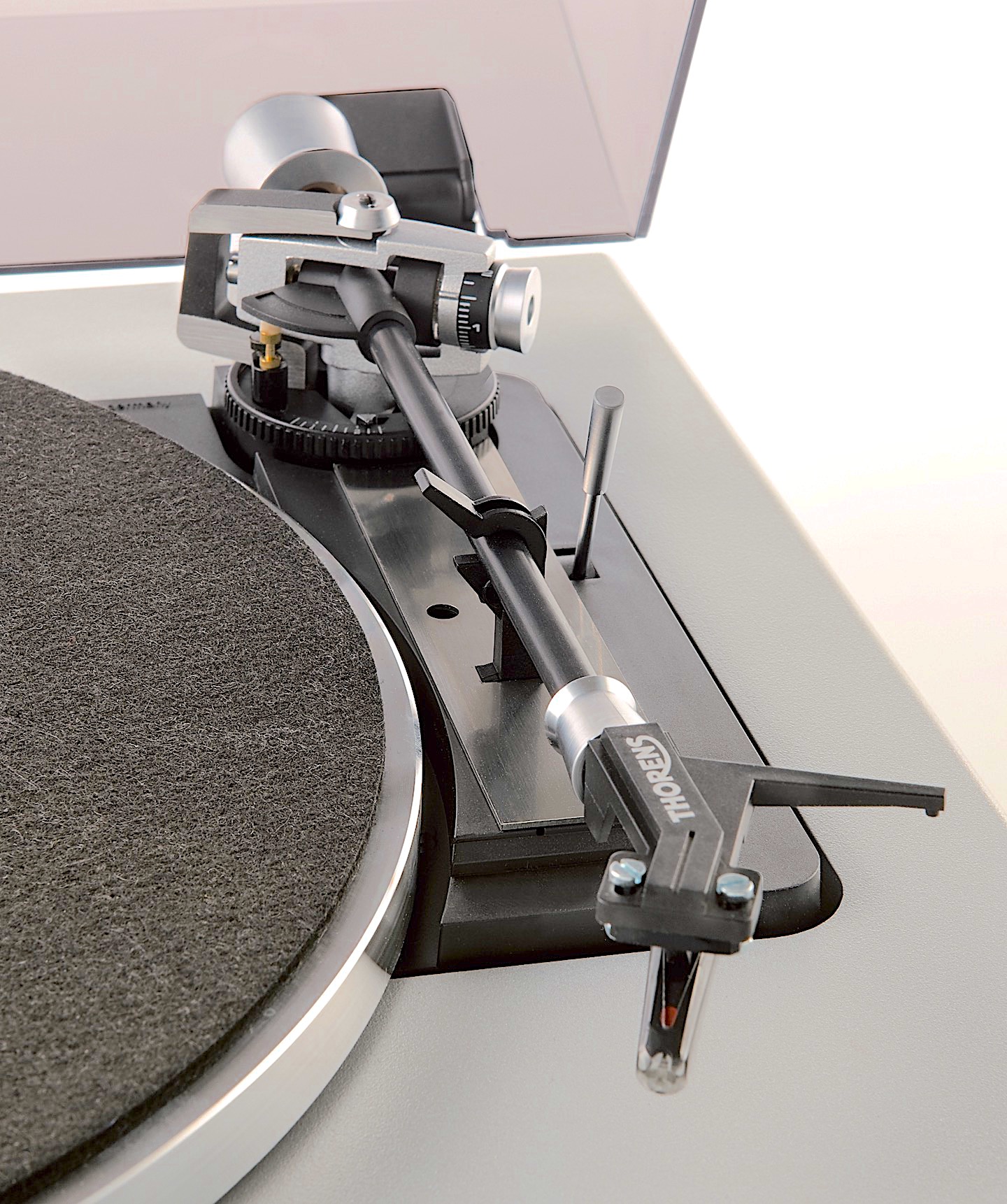
The platter sits on a plastic sub-platter that holds the flat belt, connected to a pulley that also hides under the platter. Under that is the plinth which is made from solid wood. The motor is fitted within.
Around the back is the power connection point for the wall-wart power block and also trailing from the rear are the phono cables plus earth wire (a necessity this, lots of noise was heard without it). A hinged lid is supplied but I removed it for the length of the test to remove the possibility of lid vibrations affecting the sound tests.
SEMI-AUTOMATICS – FOR AND AGAINST
There are not too many automatic turntables currently for sale on the market and even fewer at this relatively high price.
Any turntable is a design of compromise but an automatic turntable includes more than most. Hence, there are many pros and cons for any automatic turntable. Firstly, let’s look at the bad points. They can be filtered down to two words: sound quality. The very inclusion of the semi-automatic mechanism, it’s mere existence, is an issue. It doesn’t matter how finely engineered that mechanism might be or how well designed the surrounding turntable is but the auto mechanism’s presence will degrade sound quality because it produces vibration and noise. Hence, don’t buy an automatic turntable if sound quality is your only or ultimate priority.
So, why buy a automatic at all then? There’s a host of reasons, actually. Firstly, there are many vinyl fans out there who are nervous about turntables: fiddly, finicky and fragile, that’s what some people think about when they see a turntable. They love vinyl, yes but the less they have to do with the turntable itself, the better. The more automatic the turntable is, the less they have to worry about making mistakes and possibly breaking something or scratching a record, they say, so an automatic will set the mind at rest.
Automatic play also has nostalgic connotations. The action feels like something from yesteryear. From the days of the Dansette. Automatic play offers a sepia-like glow of the golden era of vinyl. Hence, automatic play has a reassuring smell of familiarity to it.
Thirdly, there is something immensely satisfying that, when a record ends, you don’t have to leap from your chair to lift the tonearm from the run-out grooves to return it to its cradle, the turntable does all that for you.
So, combine nostalgic familiarity with the reassuring nature of the engineering (watching a turntable ‘do its thing’ during a semi-automatic manoeuvre gives the impression that the turntable knows what it’s doing) plus the ‘ease of use’ and you have a vinyl player that reduces stress and tension while offering ease of use.
SOUND QUALITY
Despite the welcome robust nature of the build, I wasn’t really expecting too much in terms of sonics. I brought in a Rega RP1 as a sonic reference, which is a £250 budget player. I wasn’t even expecting the Thorens to trouble the Rega in terms of sound quality. The Thorens is a lifestyle product, really, not an audiophile design. That said, I did want to see where this turntable set the bar on a sonic basis. Then I would look at the Thorens in terms of its cheaper, direct competition.
I began with Ian Dury & The Blockheads’ Inbetweenies from Do It Yourself (1979) and was fascinated by the sonic response. I remember reviewing The Beatles’ Stereo CD box set a few years back and the sound offered plenty of detail and space but with a twist of compression to add fine detail. Just a touch, mind you. That’s what the TD 240-2 provides, in essence. This sound template meant that I had to reduce my normal gain setting by a couple of notches on my pre-amp. Nevertheless, in relative terms, there was detail on offer here, delivered by a soundstage that was full of space. It benefitted from the inherent instrumental separation, as detail was pushed towards the ear. Even subtle aspects of this mix was opened up to the listener, giving the song a rich and busy demeanour.
But there was more going on here and more to the TD 240-2’s personality than a mere sense of precision. There was the bass, which was not only strong but massy with a powerful heft. This ‘big bottom end’ was down to the control offered by the solid wooden plinth. In fact, the bass sounded like a direct drive but without the immaculate sense of timing. The lower frequencies also added a measure of discipline and focus to the sound. Hence, while the bass was big and bold, the plinth also provided order over the entire soundstage. Hence, while detail was noticeable in both the mids and treble, it was presented to the ear as if accompanied by a chaperone named Mr Woody Plinth. Such was the immense control on the frequency range imposed by the Thorens.
Listening to Barbra Streisand singing I Can See It from My Name is Barbra (1973), despite a measure of upper midrange pinch resulting from the TD 240-2’s slight compressive effect on an already slightly strident LP, I was impressed by the lean and efficient arrangement of this track and how open the soundstage was. Streisand’s vocal movement was quick, nippy and flowed with ease while her orchestral backing provided plenty of insight within the midband. Delicate cymbal taps were easily tracked, strings moved with ease while brass offered a transparency that was both clean and fast moving.
CONCLUSION
First up, to remind you, unlike the company’s TD 309, for example, this is not an audiophile turntable and it shouldn’t be judged as one. When the Rega RP1 can mount an effective challenge in terms of sonics then that result is obvious. What the Thorens TD 240-2 turntable does give you, though, is a lifestyle design that works: a seemingly simple yet crucially important point. The automatic elements are easy to use and simple to operate. In terms of its competition (and that means plastic Chinese jobs) the 240-2 is a luxury automatic turntable, an automatic turntable with finesse and a relatively quality build, an automatic turntable which feels like a piece of furniture.
Yes, it is expensive and I do have an issue with that but there is much to like in terms of its sonic presentation. Lean (in terms of the mids) and mean (in terms of the bass), the Thorens offers all – and I mean all – of the detail from any mix it encounters. For those who enjoy a solid state-type sound, the Thorens 240-2 is an ideal vinyl source.
THORENS TD 240-2 TURNTABLE
Price: £699
Website: www.thorens.com or www.ukd.co.uk
Tel: 01425 460760
GOOD: disciplined performance, open soundstage, bass, automated operation, ease of use
BAD: price, slightly strident mids
RATING: 7
REFERENCE
Rega RP1 turntable
Rega Brio-R amplifier
Spendor A1 speakers
Tellurium Q cabling
Blue Horizon Professional Rack System
Harmonic Resolution Systems Noise Reduction Components
All vinyl was cleaned using an Audio Desk’s Ultrasonic Pro Vinyl Cleaner

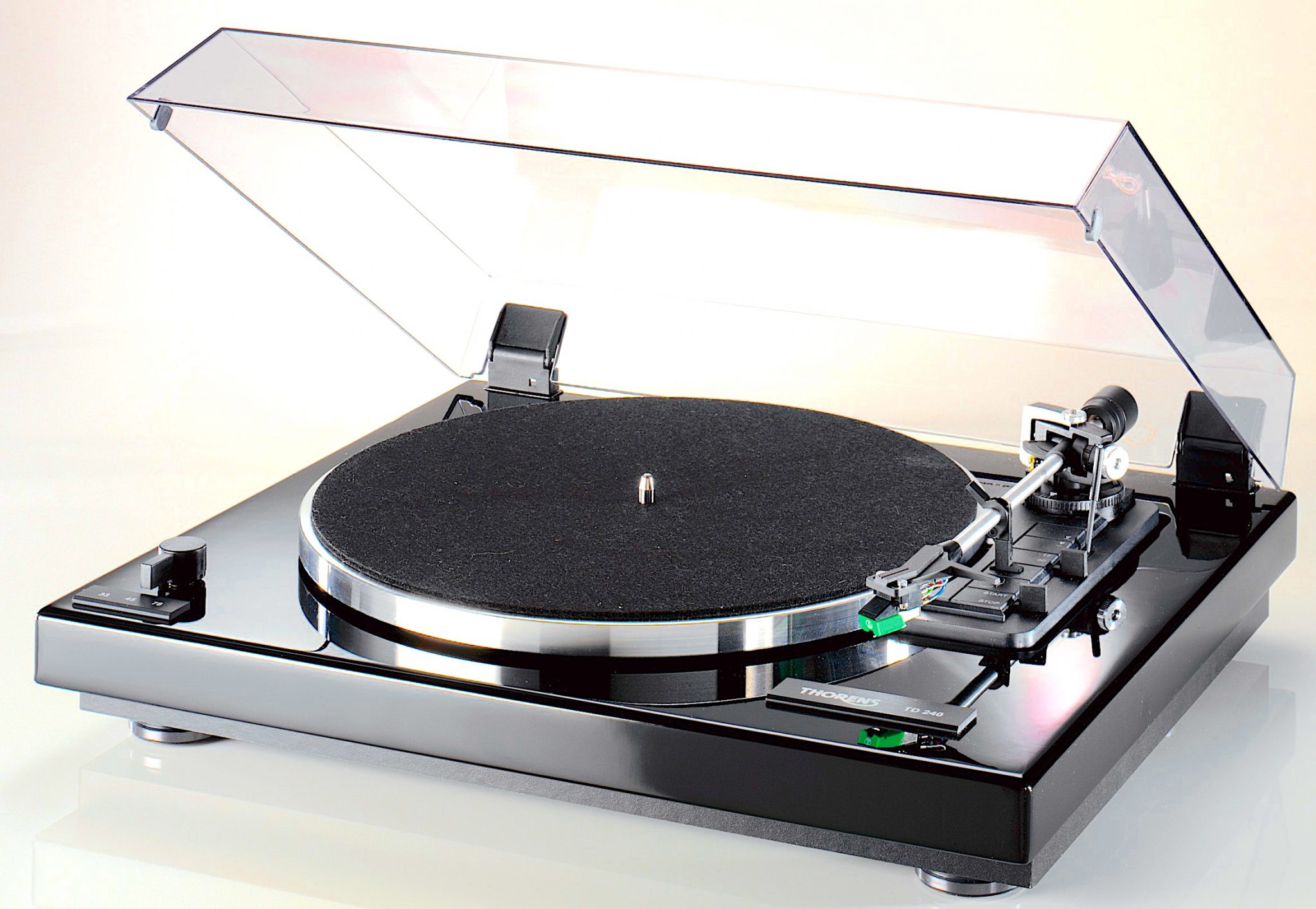
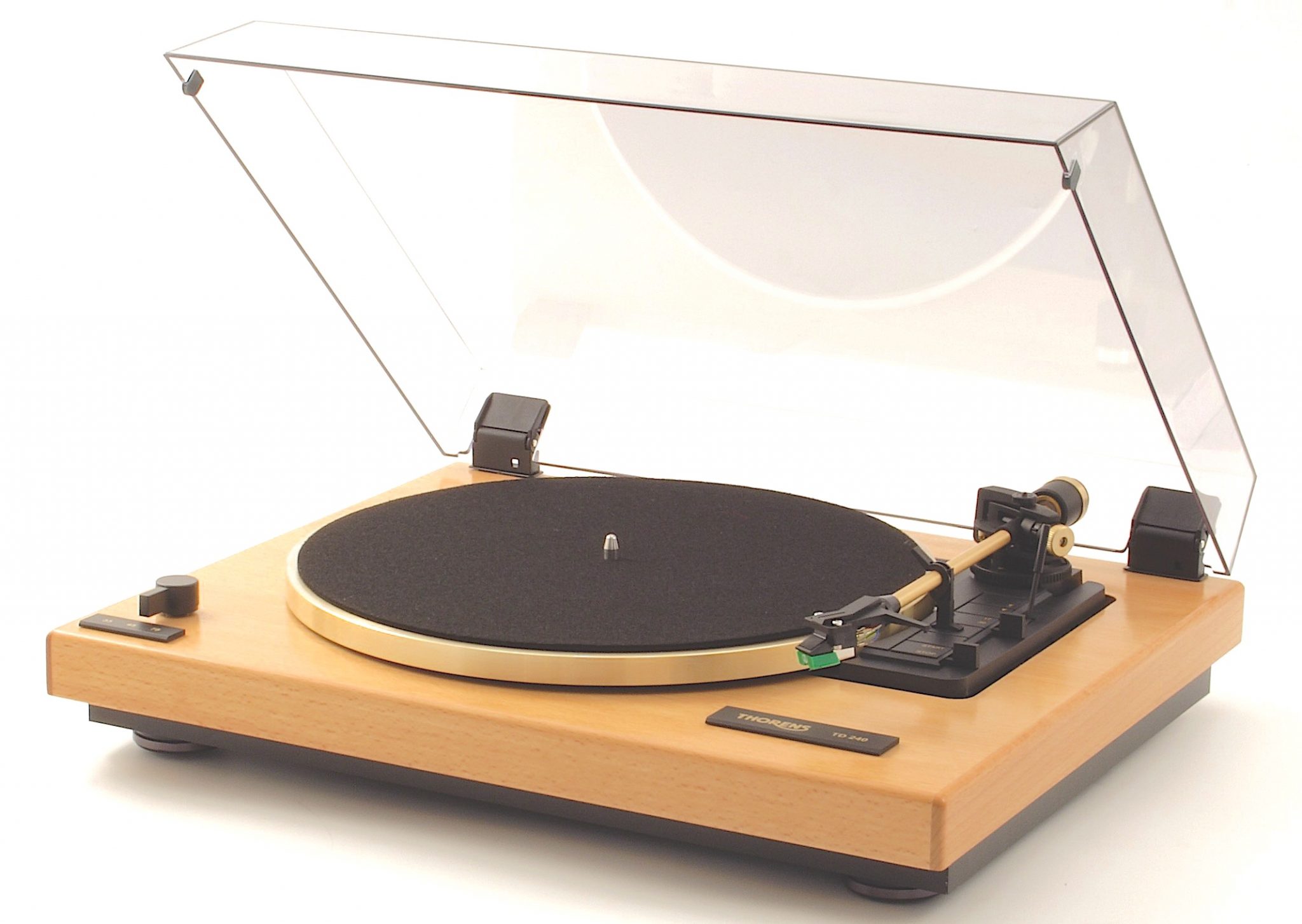
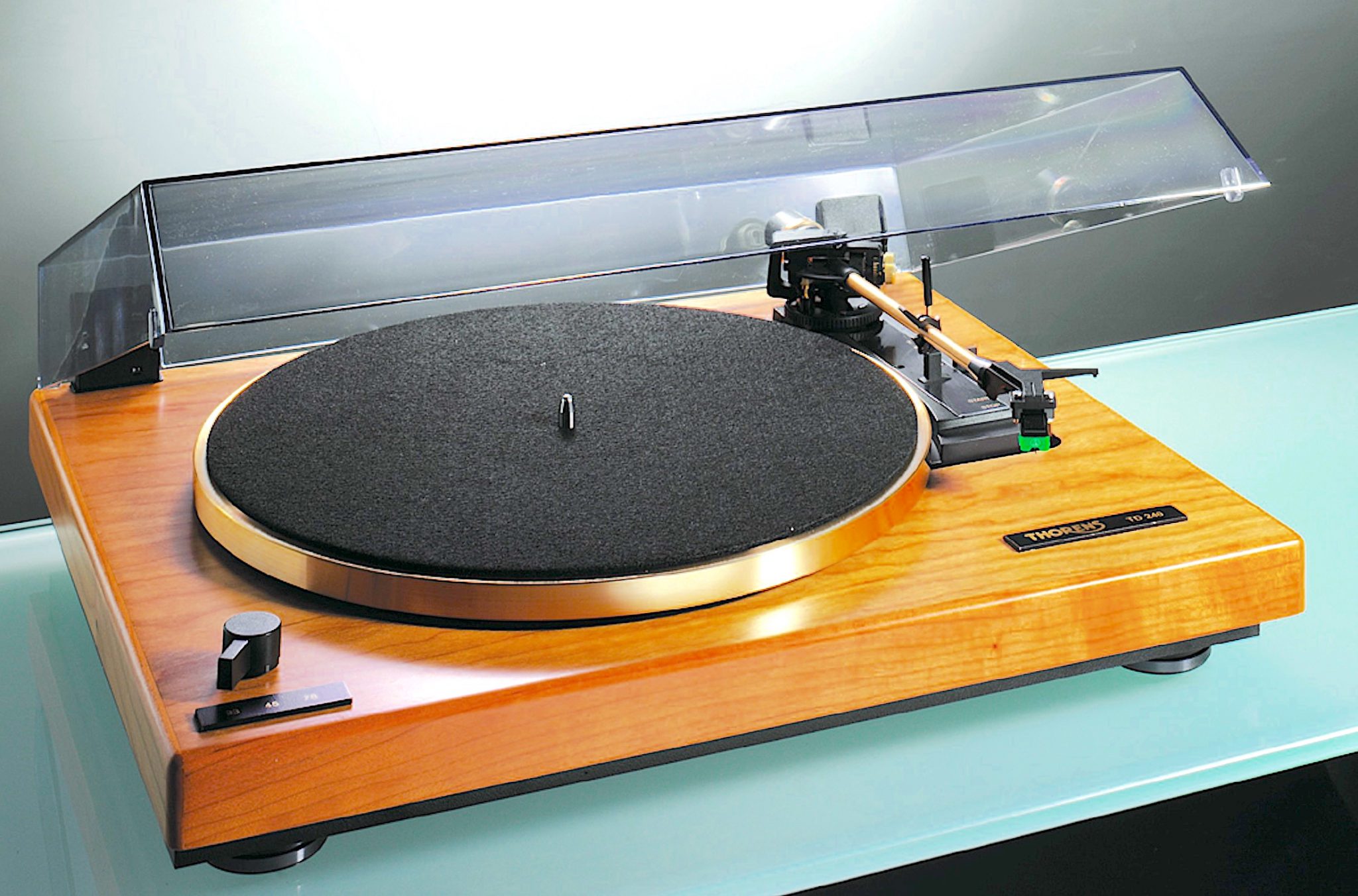
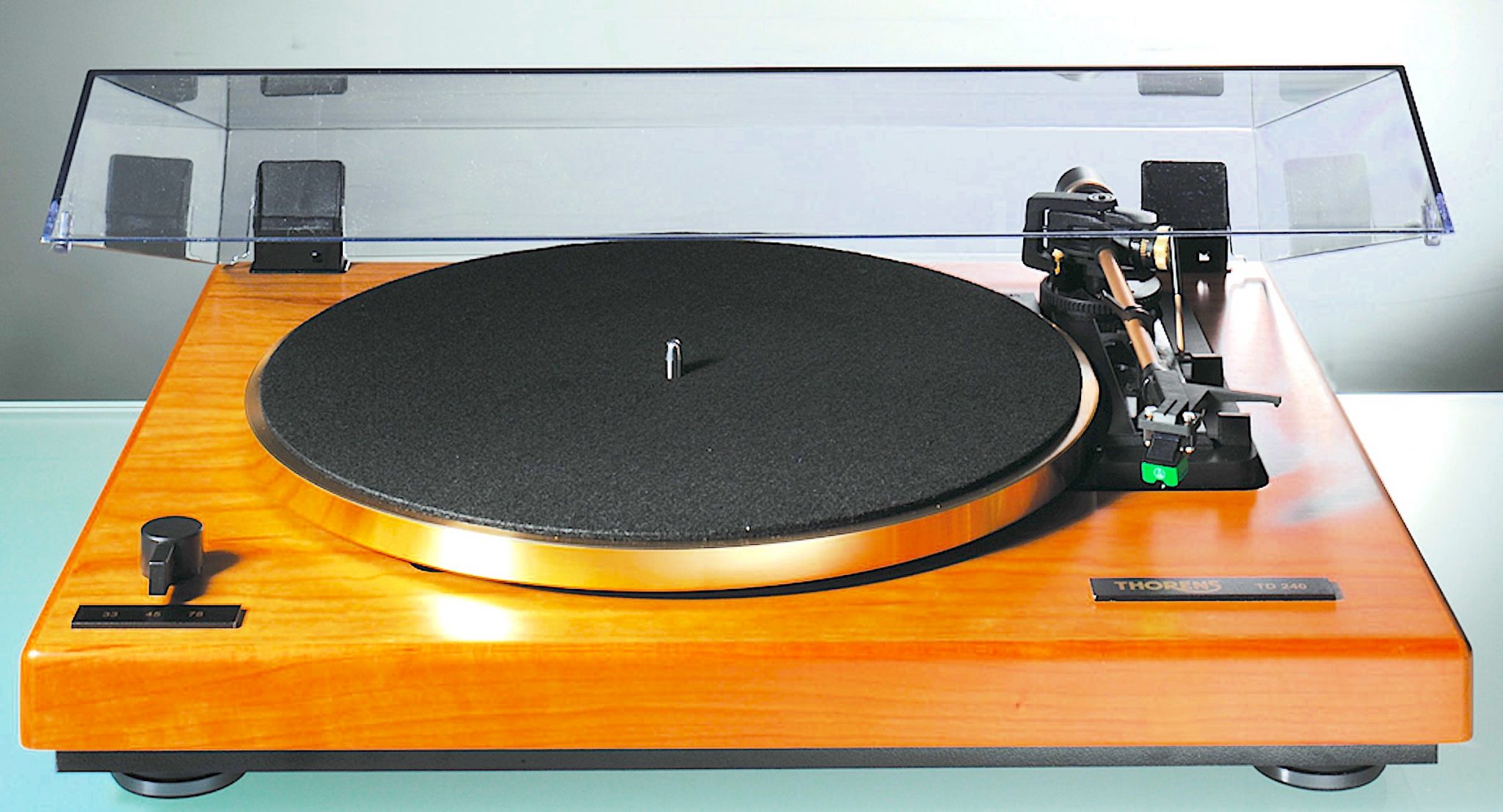
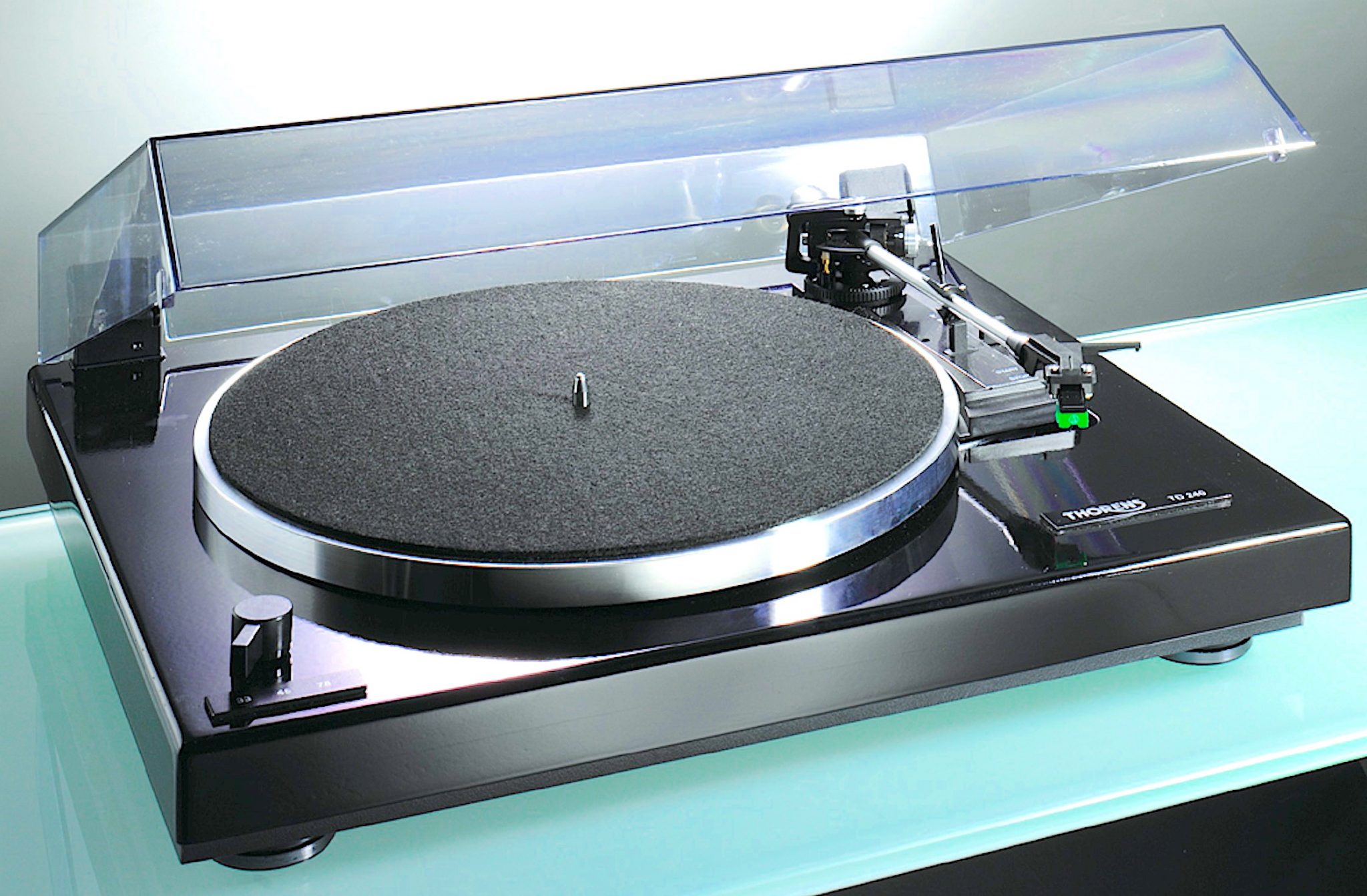

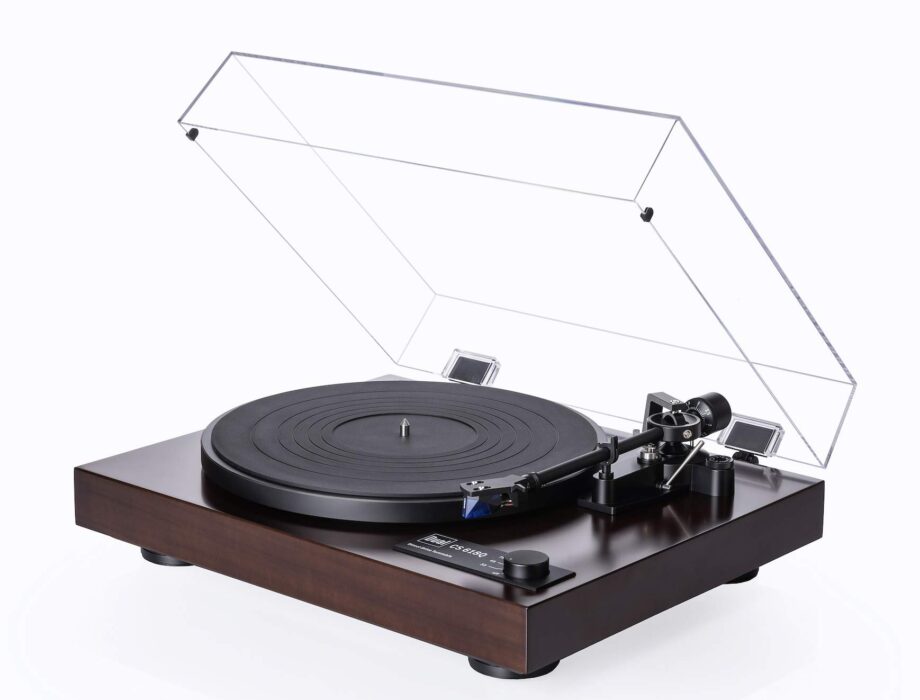
Hi Paul,
Yes yes, still reading!
I’ve read your article on the Thorens 240 with great interest.
Are you aware, Paul, that the basic design goes back to the early 80’s?
Not a screw has changed – as a matter of fact I have in my stock of parts the same mechanics, which was taken from a 1983 Thomson deck.
And it is perhaps not a coincidence that the inner platter is exactly the same diametre to a good old TD160 one!
Bingo! The Thorens belt fits perfectly!
Methinks with the 240 you pay for the Thorens moniker more than for its real manufacturing costs…
Best wishes,
Thanks for your insight Jacques.
Hello Paul,
I enjoyed the article, but was startled that you said the cartridge was Audio Technica AT95E. That was because I had primarily focused on the third image. The cartridge has a similar appearance to an Ortofon on my new, entry level table. Closer examination shows that image to not be the Thorens 240-2, at all. If it was designated as an example of something else, I missed it.
Do you mean the arm close up Keith? Thanks for the heads-up, I’ve added a caption.
My team 240-2 was a piece of junk. Brand new and came with broken wires and faulty speed control
Sorry to hear that, Morris – I hope you were able to get the issue solved by your supplier.
What is the spindle size of the TD 240-2?
Thanks
Richard Coiro
The strident mids you speak of can be banished with a different cartridge. I own this table in bright wood or walnut. It came with the ortofon om10 cartridge, which to e, fits the tonearm better, being it is light weight. It is a beautiful turntable. I often thought of selling it, but it is just to gorgeous looking.
I have been using this turntable since 2020 with much enjoyment. Mine came with an Ortofon om10 cartridge which I have upgraded with an om20 stylus. It is pretty with its walnut plinth on my shelf and I especially like that it returns the tonearm at the end of the record and shuts off
I have not explored but have long wondered about replacing the audio cables as well as the ground and power. Do you have any advice or suggestions on doing that?
Hi Douglas, do you mean interconnects, speaker cables, power block, etc? Check out my accessories reviews first. Flick through those first and get a flavour of what is out there and my views on the same. Then come back to me after that with any questions you may have. And a budget. And specific requirements.